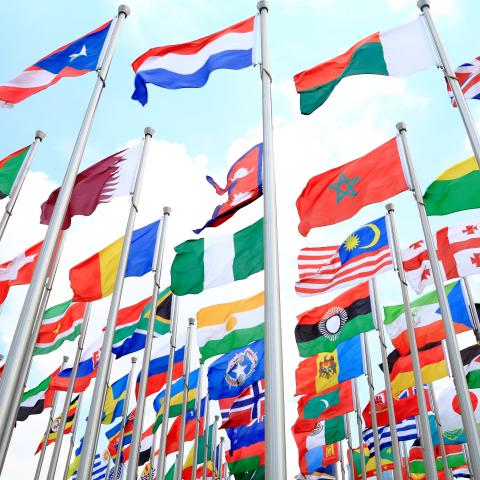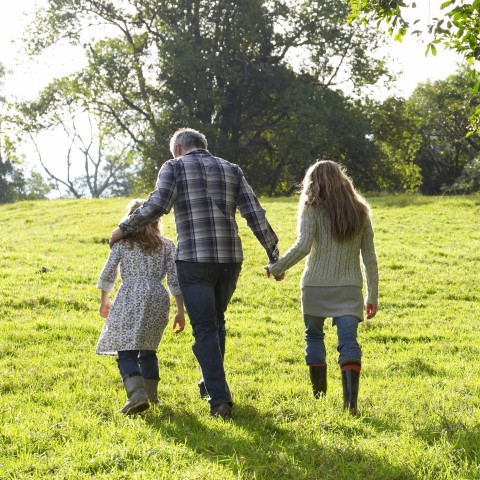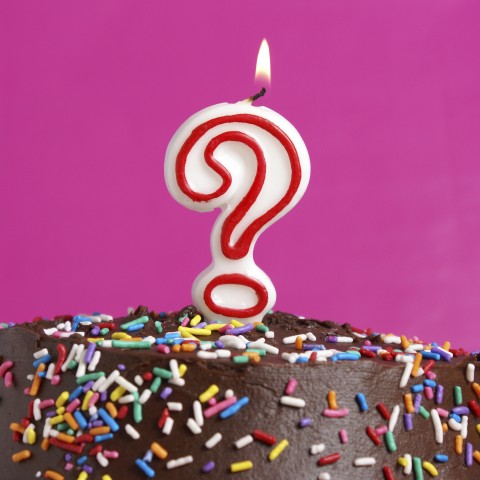Would you like to know how to introduce yourself in Dutch? A good introduction is the key to a good first impression. Even if you’re not fluent enough to go through the whole conversation in Dutch, with a fun Dutch introduction you will show people that you are interested in learning the language and discovering the culture.
Does that sound very hard? Don’t be scared! It’s not that bad with the help of key phrases like “I am from …” or “my name is …” in Dutch. You don’t have to be fluent, you can just use a catchy script that you modify (slightly) to the occasion.
In the Netherlands you may be quickly tempted to talk in English (as many Dutch people will understand you), but your intentions to learn Dutch will be appreciated and it will give you some new insights in the culture and the society.
So did you just move to the Netherlands and would you like to get to know some nice Dutchies? Or are you visiting the country and would you like to practice your Dutch? Look no further! This 4-step guide from DutchPod101 will provide you with all the necessary tips and tricks for an appropriate ánd fun introduction in Dutch.
Table of Contents
- Step 1: Greeting
- Step 2: Identifying yourself:
- Step 3: Placing yourself in society:
- Step 4: Sharing personal details:
- How DutchPod101 Can Help You Learn more Dutch
Step 1: Greeting
Before starting with your introduction it’s important to start with the right way to greet the other person. Greetings differ from country to country and not knowing how to greet can be uncomfortable. Let’s save you from this awkwardness in the Netherlands.
Handshake, three kisses or a hug?
The handshake, three kisses or the (not so common) hug: these are the three greetings of the Dutch. You probably notice that it is quite an overload of options. But it gets even trickier as the Dutch lack clarity in the big question: what will you use when? It all depends on the setting, the people, the region, the age, etc, etc.
Luckily the greeting options are much slimmer in the case of getting to know someone new. The “normal” way to greet someone new in the Netherlands is by shaking hands. This is the case in formal as well as informal settings. So, the handshake is the way to go when meeting new people in the Netherlands.
Going formal or informal?
To know what to say, it is important to first evaluate whether formal language or informal language is appropriate. Formal greetings are used in more formal settings like workplaces, conferences, meetings or even the more formal family events (mainly in the case with elderly people). Informal greetings are used between friends, (good) acquaintances, the more informal workplaces or the informal family gatherings.
What to say?
The informal greeting words in Dutch are quite simple and look a lot like English: Hoi (“Hi”) or Hallo (“Hello”). The informal greeting words depend on the time of the day: Goedemorgen (“Good morning), Goedemiddag (“Good afternoon”) or Goedenavond (“Good evening”).
Would you like to know some more options or hear the pronunciation? Have a look at our Common Ways to Say Hello in the Netherlands list.
Step 2: Identifying yourself:
You have greeted each other properly, but how can you introduce yourself in Dutch? Let’s move on to step 2: Identifying yourself. In the Netherlands this usually refers to introducing your name. However, as a foreigner it would be recommendable to tell where you’re from. This way your conversation partner will know that your Dutch is limited. It will also be a great conversation starter.
Let’s have a look at the classic questions and answers that usually come up when you identify yourself.
What is your name?
So how do you say my name is in Dutch? How to say my name is in the Dutch language? These are the key questions.
There are two common ways to tell someone your name in Dutch: Ik heet … (“My name is …”) or Ik ben … (“I am …). The “My name is” option can be used just as well for formal settings as for informal settings. The “I am” option is a more casual way of introducing yourself.
Another point of attention is the use of the full name or only the first name. During a formal self introduction the Dutch say their full name, however quite quickly they start calling each other by the first name. In an informal self introduction the Dutch only say their first name.
Language Tip: After introducing names, the Dutch usually say something that comes down to “Nice to meet you”. This can be said in two forms: the direct translation Leuk je te ontmoeten or Aangenaam. If you’re not sure what to use, just say simply Aangenaam, as this expression can be used in both the formal and informal introduction.
Language Tip: Let’s recap step one and two. A full greeting and introduction would be: Handshake. Hallo, ik heet … Aangenaam! (“Hello, my name is … Nice to meet you!”, in Dutch)
Where are you from?
When you meet a new person in the Netherlands, they might ask you Waar komt u vandaan? (formal) or Waar kom je vandaan? (informal). Which is the equivalent of “Where are you from?”. It literally means “Where do you come from?” in Dutch. To answer, you just say Ik ben, which means “I am,” and then your nationality. For example:
- Ik ben Amerikaans. (“I am American.”)
- Ik ben Duits. (“I am German.”)
- Ik ben Braziliaans. (“I am Brazilian.”)
- Ik ben Italiaans. (“I am Italian.”)
You could also answer with Ik kom uit Duitsland, which means “I come from Germany,” for example. Ik kom means “I come” and uit means “from” In that case, you would also have to change the nationality to the name of the country, like you do in English, so “I come from Netherlands”. For example:
- Ik kom uit Frankrijk. (“I am from France.”)
- Ik kom uit Australië. (“I am from Australia.”)
To return the question you can simply say En jij? which means “And you?”
Language Tip: The nationalities in Dutch are quite similar to their English equivalents. Just like in English, the Dutch write the nationality names and country names with a capital letter.
Don’t you know the Dutch word for your nationality? Find your nationality (and its pronounciation) in the DutchPod101 Vocabulary for Nationalities. Do you want to know the Dutch word for your country? Then have a look at our Essential Dutch Vocabulary About Countries.
Step 3: Placing yourself in society:
You have greeted and introduced yourself to the other person in Dutch. Learn here how to introduce yourself furtherly in Dutch. Let’s start placing yourself in society, by talking about your profession in step 3.
What is your profession?
It’s common in the Netherland to ask about the other person’s job early on in the conversation. It usually comes before what is viewed as more personal details, such as age, marital status, or family.
Let’s start with the question. In English the question is “What is your profession?”, it stays the same in formal and informal settings. In Dutch this is not the case. Here are some examples:
| Profession | |
|---|---|
| Formal: Wat is uw beroep? (“What is your profession?”) | Informal: Wat is je beroep? (“What is your profession?”) |
| Formal: Wat doet u voor werk? (Literally: “What work do you do?”) | Informal: Wat doe je voor werk? (Literally: “What work do you do?”) |
As you can see, in the formal setting the Dutch use U, and in the informal settings they use Je.
Possible answers are:
- Ik studeer. (“I study.”)
- Ik studeer Filosofie. (“I study philosophy.”)
- Ik werk in de IT. (“I work in IT.”)
- Ik ben verkoper. (“I am a salesperson.”)
- Ik ben een loodgieter. (“I am a plummer.”)
Would you like to find the name of your study or job? Find more job names in our list of 20 Common Dutch Words for Occupations with audio recordings. And if you’re a student, you can find useful information in our list on School Subjects in Dutch.
Language Tip: The Dutch are quite curious, so they might ask Wat doe jij in Nederland? (“What are you doing in the Netherlands?”). And even if they don’t dare to ask the question, a lot of Dutch people will find it interesting to know why you are visiting or living in their country. So related to your profession you can say Ik ben in Nederland voor … (“I am in the Netherlands for …”):
- Ik ben in Nederland voor werk. (“I am in the Netherlands for work.”)
- Ik ben in Nederland voor mijn studie. (“I am in the Netherlands for my study.”)
Step 4: Sharing personal details:
You already know how to introduce yourself in Dutch. But wouldn’t it be nice to get a bit more personal? In step 4 we will show you how to talk about more personal details: from your family, hobbies to age.
Tell something about your family
When meeting new people in the Netherlands, this subject isn’t likely to come up right away. However, this topic is perfectly fine as you get to know more about the other person.
So let’s first start with the questions:
| Marriage | |
|---|---|
| Formal: Bent u getrouwd? (“Are you married?”) | Informal: Ben je getrouwd? (“Are you married?”) |
| Kids | |
| Formal: Heeft u kinderen? (“Do you have kids?”) | Informal: Heb je kinderen? (“Do you have kids?”) |
| Siblings | |
| Formal: Heeft u broers of zussen? (“Do you have brothers or sisters?”) | Informal: Heb je broers of zussen? (“Do you have brothers or sisters?”) |
Some possible answers are:
- Ja, ik ben getrouwd. (“Yes, I’m married.”)
- Nee, ik ben niet getrouwd. (“No, I’m not married.”)
- Nee, ik ben gescheiden. (“No, I’m divorced.”)
- Ik heb twee kinderen. (“I have two kids.”)
- Ik heb een broer en een zus. (“I have a brother and a sister.”)
Learn here all about the Must-know Dutch Terms for Family Members and find the words you need to describe your family. Do you want to include some very special family members, your pets, in your introduction? Then look up the Animal Names in Dutch.
What are your hobbies?
Now that we’ve got all of this “basic” stuff out of the way, let’s start talking about your interests, hobbies and passions. That way you can really see if you have some connection with the other person. Let’s see if you have just found your new Dutch best friend. Let’s get personal!
Of course, we will start again with the questions:
| Hobbies | |
|---|---|
| Formal: Wat zijn uw hobby’s (“What are your hobbies?”) | Informal: Wat zijn je hobby’s? (“What are your hobbies?”) |
| Free time | |
| Formal: Wat doet u graag in uw vrije tijd? (“What do you like to do with your free time?”) | Informal: Wat doe je graag in je vrije tijd? (“What do you like to do with your free time?”) |
You could answer whatever you like, but here are some examples:
- Ik speel voetbal. (“I play soccer.”)
- Ik speel graag gitaar. (“I like to play guitar.”)
- Ik ben een netflix fan. (“I am a Netflix fanatic.”)
- Ik houd van reizen. (“I love travelling.”)
What’s your hobby? Or what do you love to do in your free time? Discover the Dutch word for this in the DutchPod101 Vocabulary for Hobbies.
How old are you?
It’s normal for young people in the Netherlands to ask each other’s ages. But of course, it might be risky to ask people over 25! If someone asks you Hoe oud ben jij? just know that it means “How old are you?” in Dutch. To respond with your age you use the verb Zijn (“To be”). Here are some examples:
- Ik ben achttien. (“I am eighteen.”)
- Ik ben twintig. (“I am twenty.”)
- Ik ben vijfentwintig. (“I am twenty five.”)
- Ik ben veertig. (“I am forty.”)
Sometimes, Dutch people add two more words to this sentence to indicate that they are explicitly talking about age and not something else. You might hear Dutch people adding the words jaar oud after the age. The word jaar means “years,” and oud means “old.” Ik ben twintig jaar oud. “I’m 20 years old.” But please pay attention: in Dutch, we often use the singular form of jaar, so we literally say “year old” instead of “years old.” Ik ben vierendertig jaar oud is “I am 34 years old.”
Don’t you know how to say your age in Dutch? Look it up in the DutchPod101 Numbers list.
Language Tip: If they ask your age but you don’t want to tell it, you can simply say that “That’s a secret”. In Dutch, that’s: Dat is een geheim.
Would you like to learn how to pronounce these introduction sentences? Check our list of 10 Lines You Need for Introducing Yourself and practice your Dutch pronunciation!
5. How DutchPod101 Can Help You Learn more Dutch
Now you know how to introduce yourself in Dutch. In this 4-step guide, you’ve learned how to greet, introduce and talk about your job, family, passions and age. And on top of that, you have also learned how to ask or recognize these questions.
Do you feel ready to introduce yourself in Dutch and make a great first impression? Start working on your own presentation. Write down the sentences and fill it up with the vocabulary that applies to you. DutchPod101 offers useful lists of lines, vocabulary, recorded audio and exercises. With these tools you can really create your perfect introduction.
Would you like some help? Take it one step further with MyTeacher to practice your introduction and get personalized feedback!
















